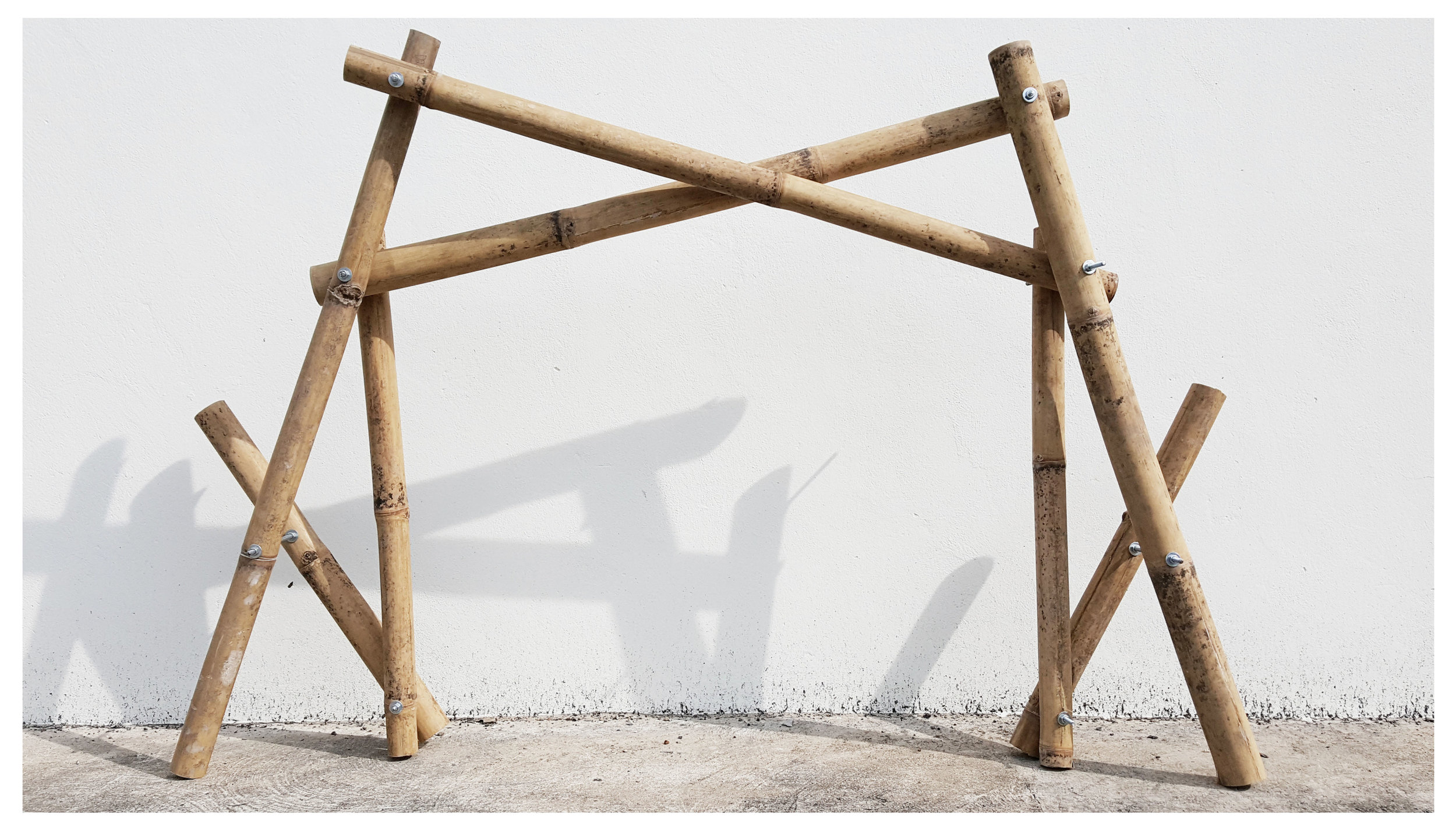The Ephemerality of Bornean Forest
Design and Make Workshop with UCSI
The output is part of Redesigning Bornean Crafts Exhibition
Date 4th of June - 11th of June
Mentor Wendy Teo (Borneo Laboratory), James Lim (UCSI)
Borneo Laboratory Facilitator Kenneth Fabian
Guest Tutor William Khoo, Eileen Phoan
Participants ANG JIA SHENG • CHIEW YING CHAO • JESSALYN KOH ORN YEE • JUNG YI JIA • KERK FU HAO • KOH CHAN SENG • KOH XIN HUI • KOK YIK LEE • LEE YUN SHENG • LIM ZHI JING • PAN SOON SOON • PANG JAT SHENG • SOO WEI YI • TAN KOK POH • TAN YONG CHYUAN • TAN YOU CHAI • YAP YEN LING


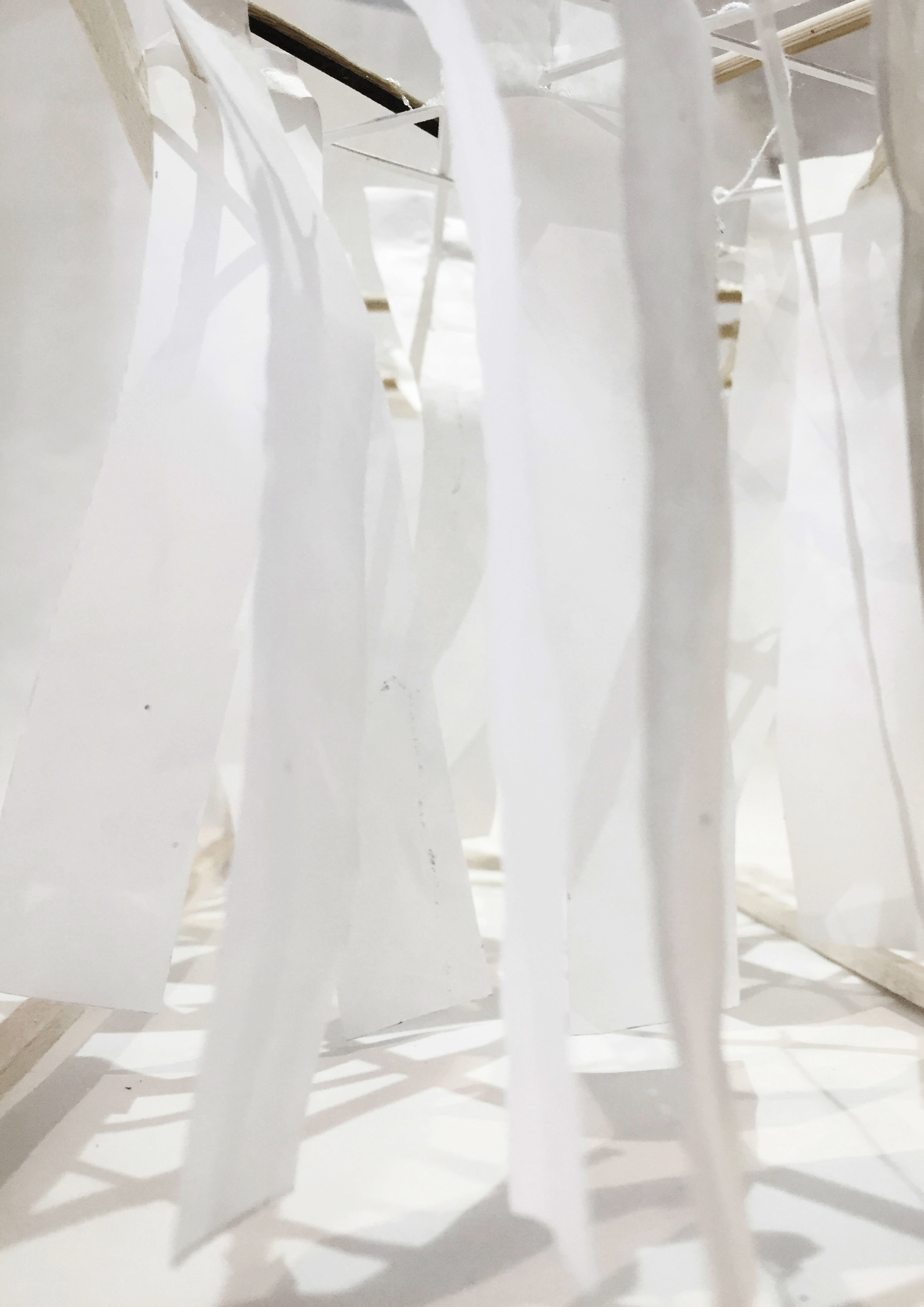
Workshop Brief
An ephemeral condition in space negotiates the boundary of art and architecture. Beauty, in this case, is living through intangible parameters of space such as time, shadow, scenario and condition. If Ephemeral is a mean, there are vocabularies pronouncing it from different part of the world, namely ‘Shakkei’, ‘Zen’ in Japan, ‘JieJing’ in China, ‘Picturesque’, ’Sublime’ in England.
We then see the translation of ephemeral quality from different region being translated into exhibition ground.
Borneo Forest on the other hand, enriched by its rich palette of material and natural condition. This workshop challenges students to explore, interpret and translate the ephemerality they experience in the nature of Borneo into a 1:1 scale exhibition experience.
Workshop Objective CAPTURING THE BORNEO AMBIENCE
Combining parametric design (grasshopper) and a palette of local craft material/techniques (bamboo, timber, steel, rattan, bark, tin and plants/indoor landscape technique) to design and fabricate a 1:1 scale exhibition ground that will be installed at Block E Borneo 744. Through a rigorous exploration in digital and analogue techniques, the final piece is anticipated to allow visitors to go through a translated experience of ephemeral Bornean forest. This exhibition will be composed of 5 major systems that could be translated into a hierarchy of elements:
1. |Information system| Keyword: documentation, montage, memory, oral tradition, interface 2. |Circulation system| Keyword: the opening, spatial hierarchy, story-telling device 3. |Signage system| Keyword: Moiré effect, visual instrument 4. |Lighting system| Keyword: materiality, porosity, sensibility, transparency, translucency 5. |Indoor Landscape system| Keyword: ephemeral, scent, hanging garden, moss, bird nest
Process



Apart from articulating a preferred forest experience, each element will be corresponding to a palette of existing material/techniques that are available in Kuching and Borneo Laboratory.
This a prototype comprising individuals’ design elements of the first phase design process. It can be categorised into 3 main systems : the hanging elements, structure and lighting approach.
The “bridge-like” structure allowed 3 different rows of hanging elements to be hung onto the structure, including the hanging semi-transparent cloths (representing mist in the jungle), the rhythmic flow of wood-cloths elements (representing the canopy of the jungle) as well as the miniature hanging bonsai (showing the life and live of both plants and bamboo trunks).
By combining the hanging elements and lighting approaches, it creates an ambience of one passing through Borneo rainforest.
The main structure of the prototype is inspired by the bamboo bridge from the Sarawak cultural village. In order to create a tunnel-like atmosphere, the bridge inspired structure had undergone some redesigning process, where some elements of the bridge can still be found.
The hanging bamboos on top allowed different light intensity penetrating through, symbolising shooting rays of light in the jungle. usually a lot of fog is quite low, because the sun shines in the fog, that's when we can see the light bias quite clearly.
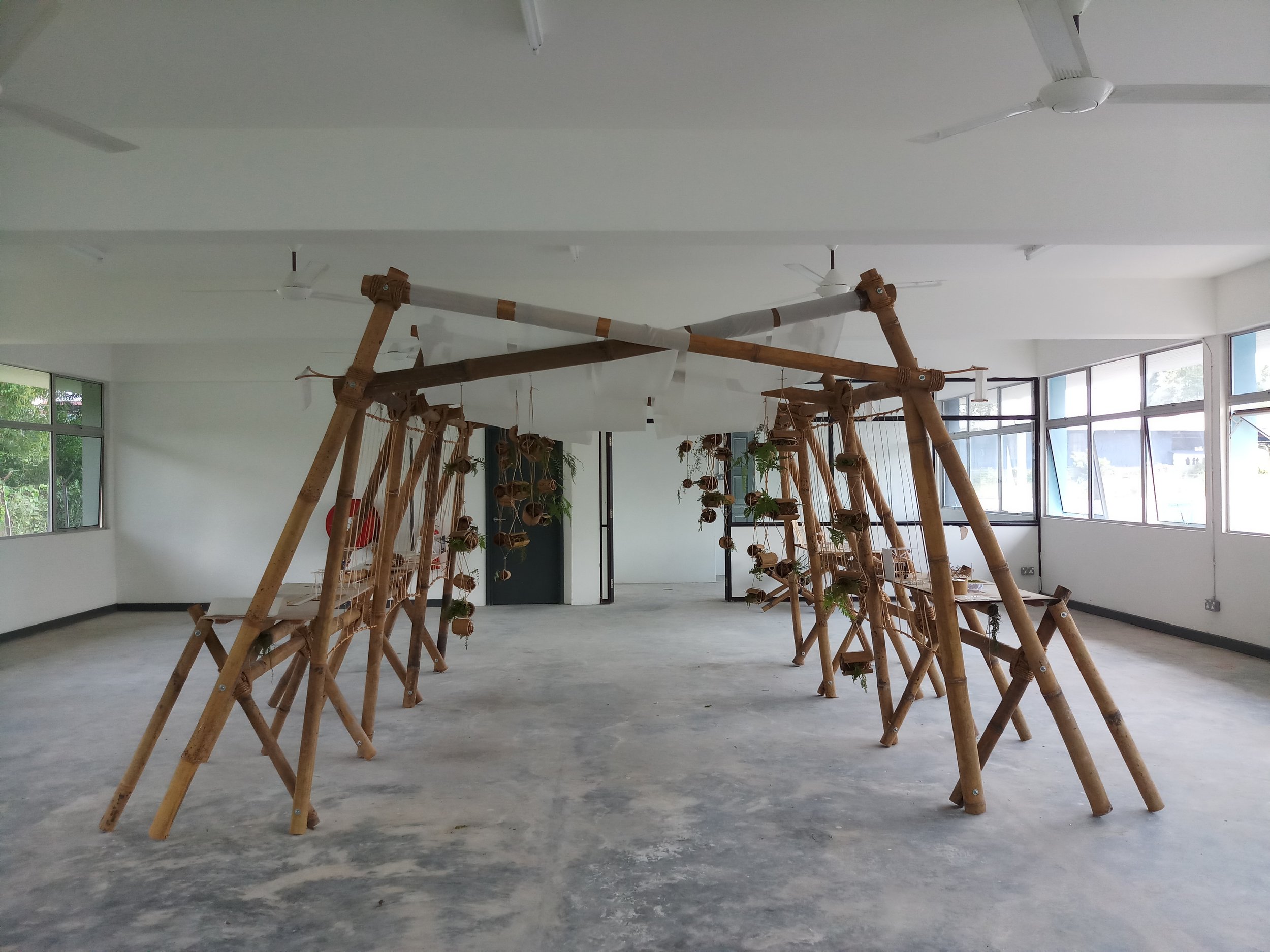
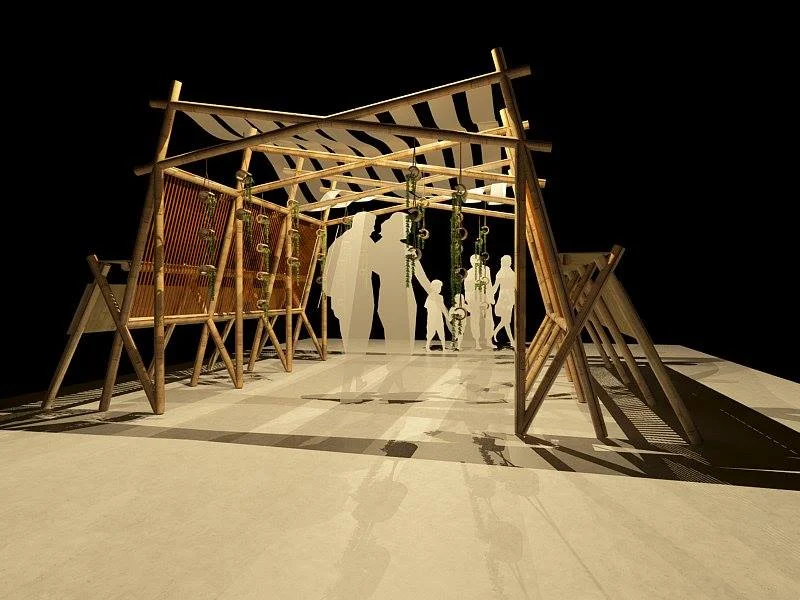
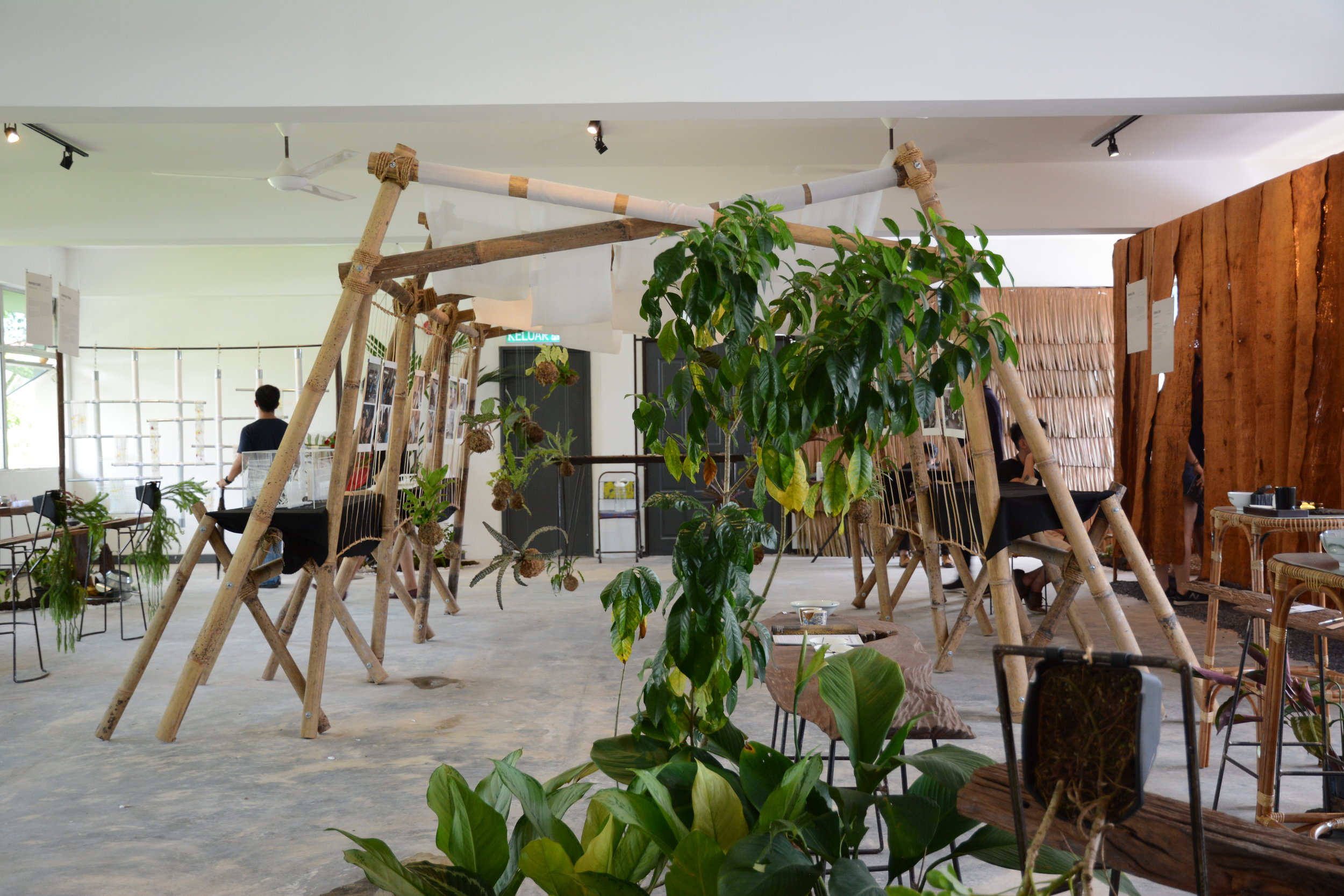
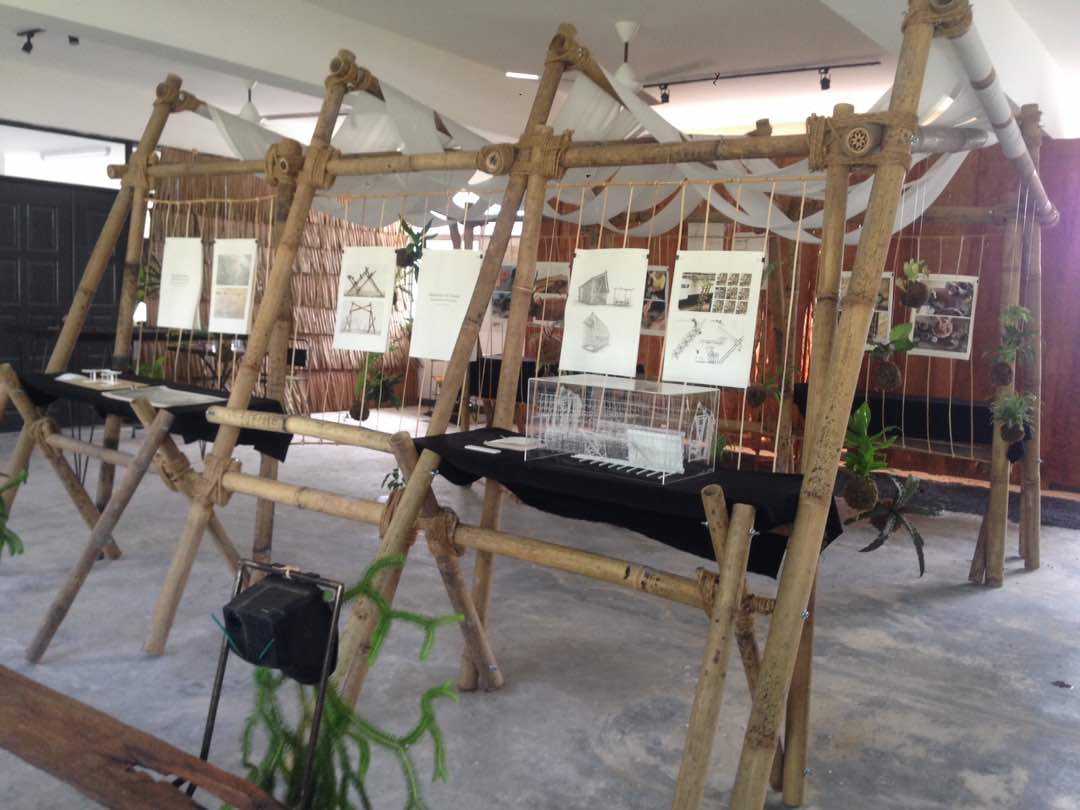
Final Piece THE JOURNEY OF BORNEO FOREST
The first impression of the exhibition is essential. By creating a tunnel ambience incorporating Borneo rainforest experience, bamboo structure from group B is constructed with the bamboo bonsai hanging on both sides, and cloths weaved found on top of the structure representing Borneo weaving elements.
By playing with the lighting and semi-transparent cloths hung along the pathway, it creates a foggy ambience of the rainforest, showing the light bias of the artificial light.



